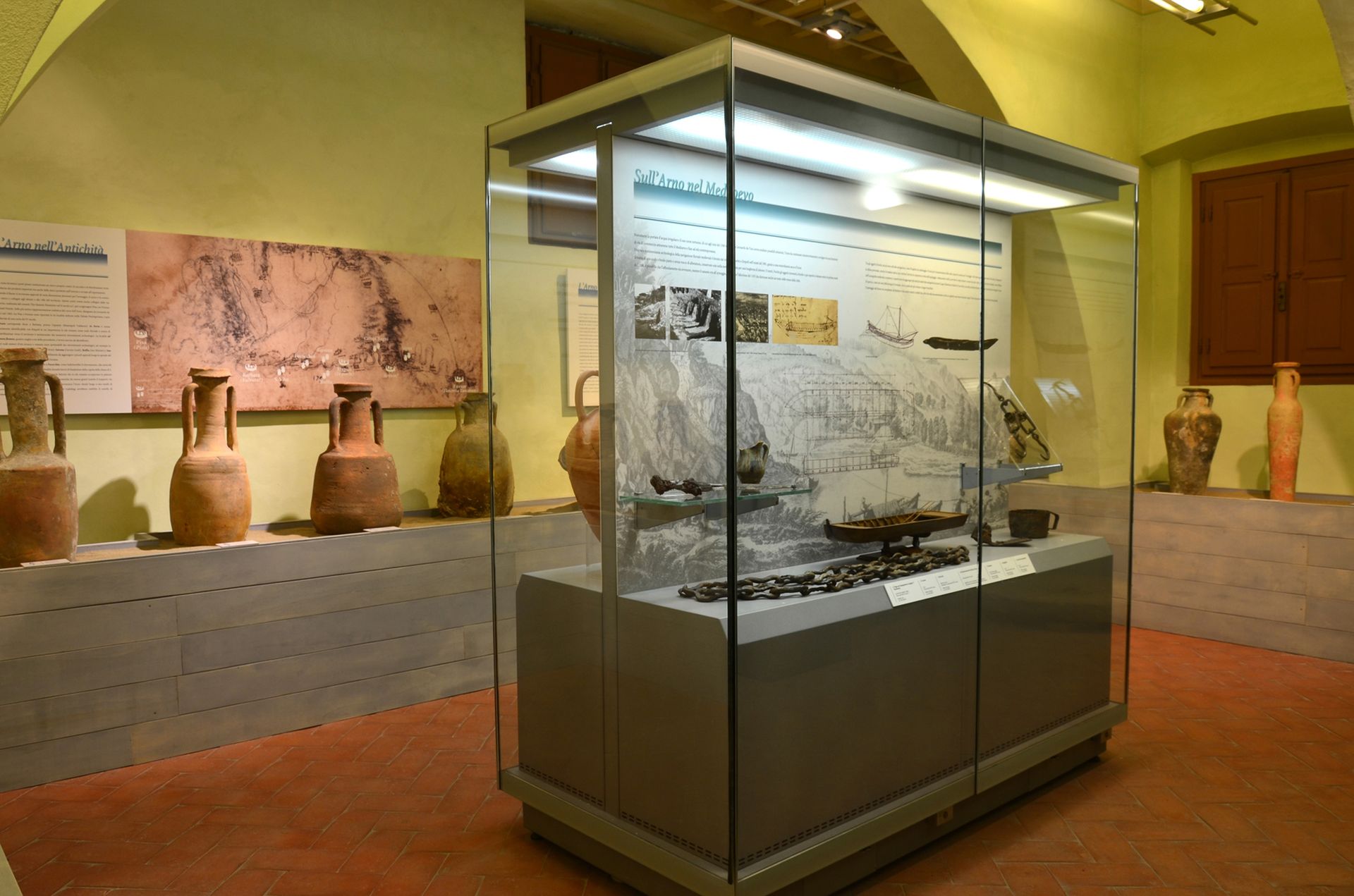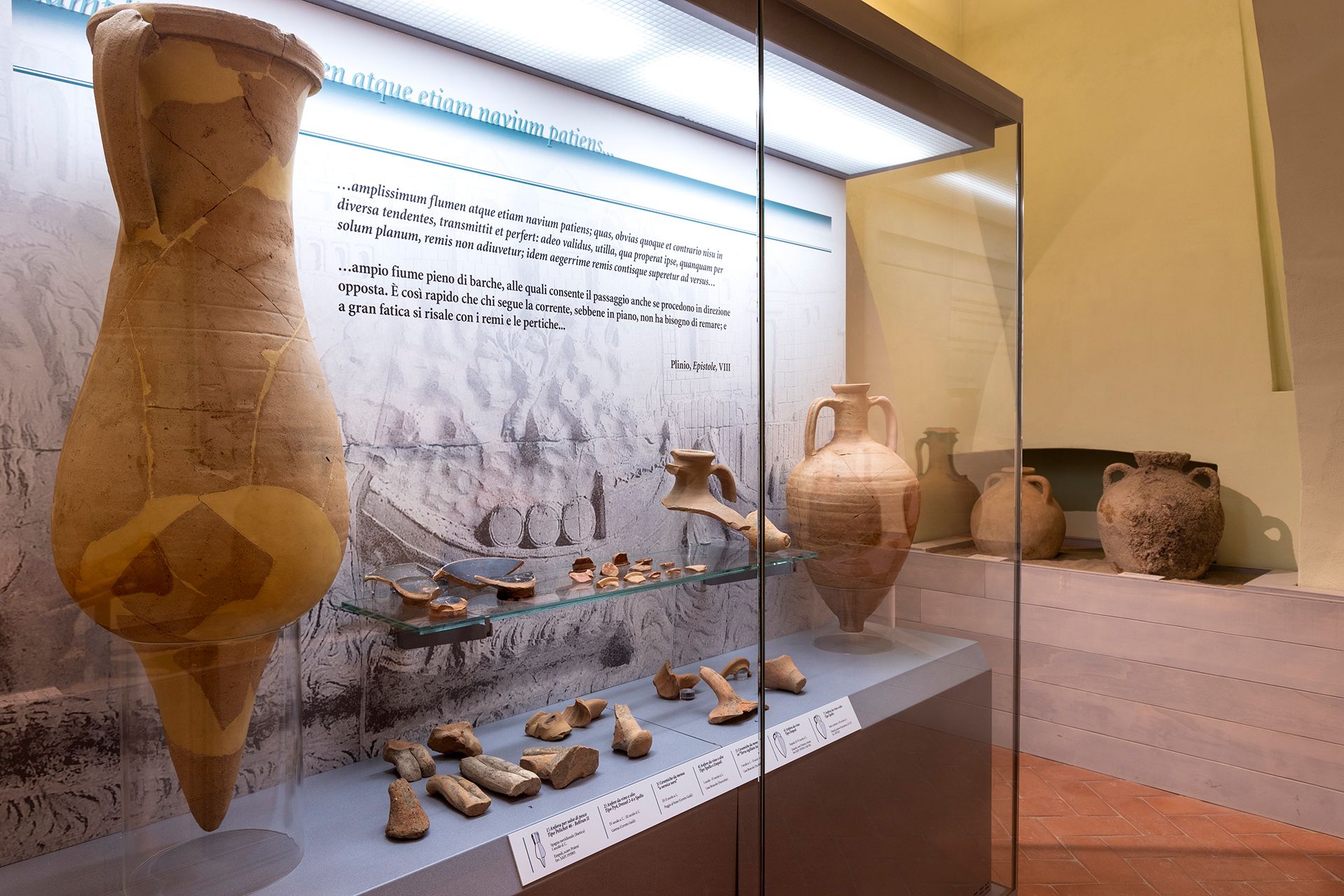- The Museum
- The Rooms
- Archaeology (1-6)
- Art (7-15)
- Room 7. Paintings, frescoes and Minor Guilds from the 13th to the 15th centuries
- Room 8. The great 16th-century paintings
- Room 9. 17th-century paintings
- Room 10. The jewellery room
- Room 11. 17th- and 18th-centuries paintings and jewellery
- Rooms 12-13. The sacred vestments
- Room 14. The relics of Giuseppe Montanelli (Fucecchio, 1813-1862)
- Room 15. The Arturo Checchi collection (Fucecchio 1886 – Perugia 1971)
- Nature (16-17)
- Collections
- Temporary exhibitions
- Events
- Multimedia
- Surroundings
- Versione italiana
Room 6. A history of the Arno river
Since ancient times, the Arno valley has been the core of a dense network of exchanges, connecting the inner Tuscan centers with the Mediterranean. The major cities of Tuscany owe their birth and development to the presence of the river and are concentrated in fact near its valley.
However, the Arno has also favored the development of rural areas and its banks have been dotted since ancient times with harbours that served a number of minor settlements living off the fluvial economy.
The first thousand years of this very long history are described by amphorae used as vessels for items to be transported, attested by archaeological research in the valley. Hence, it is possible to reconstruct the way commerce developed between the Mediterranean and the Tuscan hinterland.



